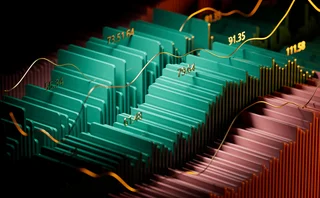Zeros and ones: Industry contemplates T+0 as the next step
With the North American transition to T+1 settlement complete, same-day settlement could be the next goalpost set, though skeptics are many.

All hands on deck—that was likely the directive for operational teams across US capital markets on May 28, 2024, the day when settlement cycles in North America moved from T+2 to T+1.
Last February, in a close vote of 3-2, the US Securities and Exchange Commission finalized a long-awaited move to T+1, giving firms around 18 months to prepare for compliance. Industry participants and onlookers told WatersTechnology last year that meeting the May compliance deadline in a timeline under two years would not be easy, citing legacy technology hurdles, manual processes, and a historical lack of investment in post-trade.
By most accounts, the transition is being hailed as a success, meaning eyes have shifted to how a transition to T+1 will play out in Asia, the UK and Europe. For North American markets, the next settlement goalpost could be implementing T+0.
Conversations around T+1 and T+0 ramped up following the meme stock craze of 2021. In testimony to the US House Committee on Financial Services in May 2021, Securities and Exchange Commission chair Gary Gensler told Congress that he saw shortening the settlement cycle as a way to lower risk. “The longer it takes for a trade to settle, the more risk our markets assume,” he said. “The good news is, though it will take a lot of work by many parties, we now have the technology to further shorten the settlement cycles, not only to the settlement cycle we had a century ago, but even to same-day settlement (T-0 or “T-evening”).”
In March, Lynn Challenger, global head of trading at UBS Asset Management, told WatersTechnology that Europe, considering its timeframe for moving to T+1, could go one step further. “In Europe, I think it’s worth pausing and thinking about, ‘Can we, as an industry, make a step change in how we settle?” he said. “Do we really need to go to T+1, or should we make the investment to go straight to T+0?”
Across capital markets, sources have told WatersTechnology that they do not see a transition to T+0 happening for at least five to seven years. For some, just defining what T+0 entails is an important part of the potential roadmap while others highlight the need for a tech overhaul that wouldn’t necessarily mirror past transitions. For an industry that appears to always be playing a game of catch-up with technology, the questions currently outweigh the answers.
Ch-ch-ch-ch-changes
The Roaring 20s decade in the last century got its name, in part, because of how well the stock market was performing. At that time, trades settled on a T+1 basis, but the literal hands-on method of trading overwhelmed participants. With no computers, papers piled up and clearing houses and other intermediaries needed more time to manage and verify transactions, so the settlement cycle was extended to T+5. A century later, the US is back at T+1, and even with computers and artificial intelligence in the mix, manual processes are still part of the equation.
A November 2022 whitepaper from Firebrand Research and Torstone Technology, a provider of post-trade processing services, found that a strong majority (81%) of brokers and banks active in North America use either manual processes or homegrown systems to support their post-trade processes. But Virginie O’Shea, founder and CEO of Firebrand Research, today tells WatersTechnology that manual processes and workarounds aren’t long-term approaches in an environment where people are looking to shorten settlement.
“People are going to burn out, so there needs to be some redress and some technological change, to support some of the stuff that’s going on,” she says. “And it hasn’t been done yet. People just didn’t have enough time to address some of their batch-based and manual processes. We might see a lot of work going on over the next year or so, especially if we see more conversations about T+0.”
For BMO Capital Markets, automation has been top of mind for some time. Nikeeta Julasana, the bank’s managing director of client and regulatory technology, says that among the areas it focused on for T+1, one involved driving more automation and digitization within trade processing and client applications. “The way I think about T+0, technology automation is going to play a much bigger role,” she says.
Julasana sees it involving three pieces: workflow automation, automated controls, and automated end-to-end transparency. For workflow automation, trade allocations and affirmations would work in a more automated fashion, while automated controls would eliminate manual processes such as reconciliation between systems, particularly between the front and back offices. Lastly, automated end-to-end transparency would aim to make it easier for operations teams to see the status of a trade or allocation and fix breaks.
“T+0 is going to be a big move for us as an industry, and while every firm has to invest within their internal technology and operations, the approach will need to be very harmonized across various internal and external systems,” she says. Working with external integrations, like electronic venues, will be key when data needs to be shared on a T+0 basis.
Gerard Walsh, global head of client solutions for banking and markets at Northern Trust, tells WatersTechnology that the current pace of technological innovation could make that jump deliverable by 2030. “I tend to agree that it might be useful to wait for improved tech before the world’s markets contemplate a mass migration to T+0 settlement,” he says. “If you think about how much technology could improve over the next five years, perhaps it is feasible that a leap from T+2 straight to T+0 may be deliverable by later in the decade.” But, he says, in order to do that, quite a few dominoes need to fall in the right order.
Others aren’t necessarily on board. Stephane Ritz, senior financial services leader for banking and capital markets at Capco, sees the need for a buffer between T+2 and T+0. “If you think about [the move from] T+2 to T+1, you literally reduce your settlement cycle by 50% [in] one day,” he says. “If you were to reduce that by 100% without some type of testing period, I can guarantee you that’s not going to happen.”
Defining what T+0 will look like is also something that will need to be hammered out. The SEC’s Gensler has defined T+0 as same-day settlement, while others raise the possibility of real-time settlement. Kaisha Schnoll, assistant vice president of trade settlement and T3 at STP Investment Services, sees same-day settlement as the more attainable goal, but even that isn’t without its difficulties. “There are certainly trades being done same day currently, so it’s possible in the US. But with the volume and the timing, that’s what adds the complexity there.”
Distinguishing between real time and same day is also important in the context of batch processing. James Maxfield, chief product officer at data reconciliation vendor Duco, says that in a T+0 environment there would be no batches. “If you think about how much of that technology is relying on a batch being triggered and being run somewhere, you’re kind of saying, ‘Well, actually, there is no time for that, because I trade today, and all of my processes move intraday.’”
You often see blockchain enthusiasts argue that blockchain is the answer to this instant settlement. While that may be true in time, it’s not the case now
Gerard Walsh, Northern Trust
Maxfield says the shift to intraday processing would be significant, with a heavy impact on foreign market participants who want to trade US securities, for example. “Either they’re up late, or I’m up late, or somebody else is up early,” he says. The ability to pick stuff up overnight in other time zones— particularly in Asia-Pacific—is integral to the capital market business, and in the T+0 operating model that changes.
Maxfield says systems would need to be able to operate with intraday mini-batches or with a message-based architecture that isn’t reliant on systems bundling up data and delivering it, but streaming instead. “That is a fairly significant architectural shift for technology that was built and designed 20 or 30 years ago,” he says.
The oldest technology deployed across capital markets is of course the mainframe, and Maxfield says in some cases a slightly more modern UX sits on top of it. “They’re great because they’re cheap. They’re really easy to scale, and as a result … your CPU is quite cheap on those platforms,” he says. “So, it gives a relatively low cost to run, but they’re extremely difficult to change.”
Maxfield likens dismantling legacy tech to a game of Jenga. “We pull the pieces out and then you’re not quite sure what the impact is going to be.” Core settlement applications and trade processing applications typically sit within a mainframe, and when data is being passed through these systems, one misstep in changing something could blow up a system.
Blockchain?
In the T+0 conversation, one piece of technology has continually reared its head: distributed ledger technology (DLT). When conversations around DLT’s potential first started in 2015, settlement was presented as a possible use case.
In a now ill-fated attempt, the Australian Securities Exchange took the step of announcing it would replace its Clearing House Electronic Subregister System with a blockchain-based solution from Digital Asset in 2017. After years of delays, the exchange derecognized the software in November 2022.
Maxfield says one of the original hypotheses for the ASX move was that the Australian market was relatively sizable and self-contained around participants. “It wasn’t a complex business model to change,” he says. “Clearly, trying to pioneer a critical market infrastructure change on what at the time was kind of almost unknown technology, in hindsight, it was probably a bad idea.”
Seven years later, some are still hesitant about introducing blockchain into the equation. A global head of trading at a tier-one bank tells WatersTechnology that the decision trees around blockchain would make it difficult to place alongside current tech stacks. “Is it permissioned or public? Is it interoperable with other blockchains? What are the smart contracts?” they ask. “It’s not that things couldn’t be built to accommodate, but that’s just not the framework that exists today for any software development.”
Northern Trust’s Walsh argues that the blockchain of today cannot be expected to step up to the task. “You often see blockchain enthusiasts argue that [it] is the answer to this instant settlement. While that may be true in time, it’s not the case now,” he says. “And that’s the point that we would make around technology solutions—they may be available in time, but they’re not here at scale in 2024. It’s unrealistic to suggest scaling blockchain—particularly given the Australian Stock Exchange’s experience—to serve the throughputs required on the New York Stock Exchange or Nasdaq on the current technology.”
For Walsh, the promise of new developments in capital markets, both in regulation and technology, is essentially a waiting game.
“I’m old enough to remember the promises of such technological advancements as the consolidated tape in Europe, which I first heard about 15 years ago, and the market is still talking about it. So, the promise of instantaneous settlement [and] the promise of blockchain, remains a promise.”
With additional reporting from Wei-Shen Wong
Only users who have a paid subscription or are part of a corporate subscription are able to print or copy content.
To access these options, along with all other subscription benefits, please contact info@waterstechnology.com or view our subscription options here: http://subscriptions.waterstechnology.com/subscribe
You are currently unable to print this content. Please contact info@waterstechnology.com to find out more.
You are currently unable to copy this content. Please contact info@waterstechnology.com to find out more.
Copyright Infopro Digital Limited. All rights reserved.
As outlined in our terms and conditions, https://www.infopro-digital.com/terms-and-conditions/subscriptions/ (point 2.4), printing is limited to a single copy.
If you would like to purchase additional rights please email info@waterstechnology.com
Copyright Infopro Digital Limited. All rights reserved.
You may share this content using our article tools. As outlined in our terms and conditions, https://www.infopro-digital.com/terms-and-conditions/subscriptions/ (clause 2.4), an Authorised User may only make one copy of the materials for their own personal use. You must also comply with the restrictions in clause 2.5.
If you would like to purchase additional rights please email info@waterstechnology.com
More on Trading Tech
Recent volatility highlights tech’s vital role in fixed income pricing
MarketAxess’ Julien Alexandre discusses how cutting-edge technology is transforming pricing and execution in the fixed income market amid periodic bouts of volatility
Banks fret over vendor contracts as Dora deadline looms
Thousands of vendor contracts will need repapering to comply with EU’s new digital resilience rules
Where have all the exchange platform providers gone?
The IMD Wrap: Running an exchange is a profitable business. The margins on market data sales alone can be staggering. And since every exchange needs a reliable and efficient exchange technology stack, Max asks why more vendors aren’t diving into this space.
This Week: Trading Technologies completes ANS deal; State Street; Equinix; and more
A summary of the latest financial technology news.
Interactive Brokers looks beyond US borders for growth opportunities
As retail trading has grown in volume and importance, Interactive Brokers and others are expanding international offerings and marketing abroad.
JP Morgan’s goal of STP in loans materializes on Versana’s platform
The accomplishment highlights the budding digitization of private credit, though it’s still a long road ahead.
As data volumes explode, expect more outages
Waters Wrap: At least for those unprepared—though preparation is no easy task—says Anthony.
This Week: ICE Bonds and MarketAxess plan to connect liquidity networks, TS Imagine, Bloomberg, and more
A summary of the latest financial technology news.








